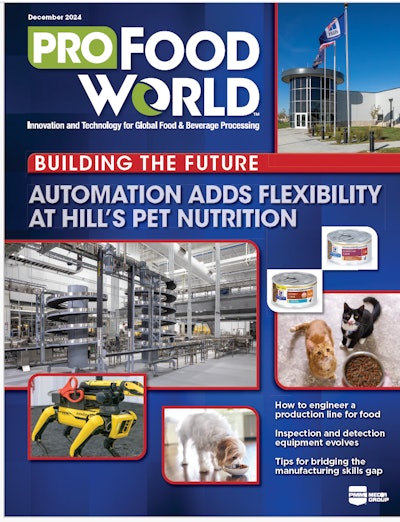
Coca-Cola is an iconic brand—a well-recognized taste in a well-recognized bottle. But when The Coca-Cola Co. aims to make a change to the norms of operation, it’s thinking not only about its flagship beverage and all its variations, but a full range of waters, sparkling beverages, hydration and sports drinks, dairy and plant-based beverages, juices, coffees, teas…
“We have to take all of that into account when building a sustainability plan,” said Cloeann Durham, vice president of quality, safety, and environment for Coca-Cola’s North American Operating Unit. She was speaking to the audience at ISBT’s BevTech meeting in Frisco, Texas. Though Coca-Cola’s brands are positioned to grow, sustainability is equally important, she noted. “Seeing volume growth is great. But seeing volume growth without sustainability—it can outrun you really fast.”
The sustainability priorities themselves make up no short list either: helping solve the global packaging waste crisis, reducing carbon footprint through science-based targets while building resilience for climate events now and in the future, increasing water security for operations, protecting communities and nature, reducing added sugar across the portfolio while providing consumers with more choices and smaller packaging options, growing a more sustainable supply chain, advancing women and diversity, and supporting human rights.
Coca-Cola has passed several of its environmental, social, and governance (ESG) goals and is working toward plans that include 2025 packaging goals, a 2030 climate goal, a new 2030 water strategy, and a streamlined global beverage portfolio. In all of this, having support from the top has been vital. “We have the commitment at the highest level in our company,” Durham says, pointing to James Quincey, chairman and CEO.
Transparency to consumers
Transparency—publicly reported sustainability goals as well as accountability on those results—has been instrumental in driving Coca-Cola to continuously improve, Durham noted. The beverage industry has shifted considerably over the years. It’s no longer enough to put together a feel-good TV ad to convince consumers. “Data is all you really have to tell your story,” she says of today’s expectations. “Science-based targeting is offering a different level of transparency.”
Coca-Cola’s sustainable business priorities cross a broad spectrum, but Durham dove a bit deeper into several areas. A significant effort is its World Without Waste initiative, which looks primarily at packaging and how to drive a circular economy to help reduce the carbon footprint of that package.
One leg of the initiative focuses on the design of the bottle. Coca-Cola has a goal to make 100% of its packaging recyclable by 2025 and use at least 50% recycled material in its packaging by 2030. The label is a big piece of that discussion, Durham commented, because not all labels are recyclable. To date, 90% of the company’s packaging is recyclable globally, and it uses 23% recycled material. About 30 markets offer at least one brand in 100% recycled PET packaging, and four markets use 100% recycled PET for their entire plastic packaging portfolio, she added.






.QDipPoDgvO.jpg?crop=focalpoint&fit=crop&fp-x=0.5&fp-y=0.5&h=167&w=250&auto=format%2Ccompress&q=70)














